Hybrid horizons: Testing the new Ford Ranger PHEV
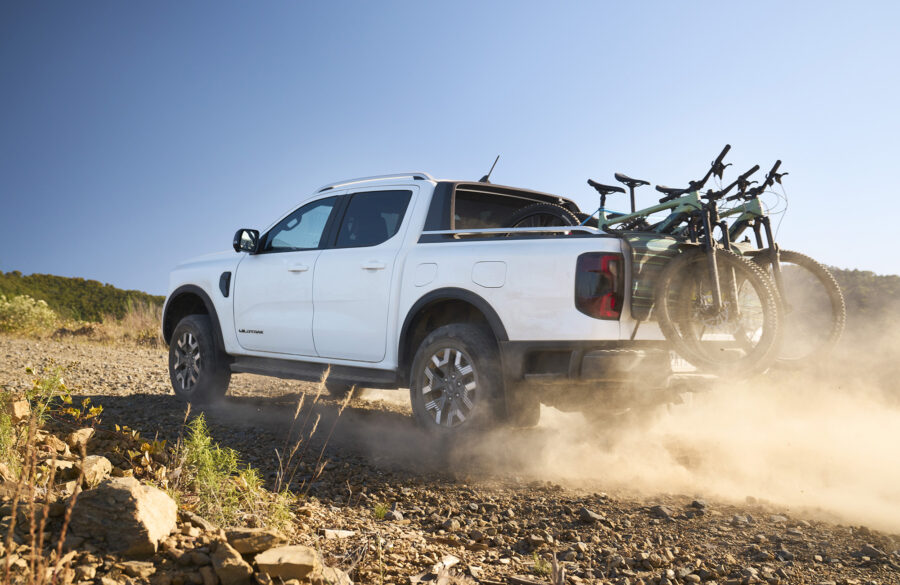
Ford’s electrified Ranger is finally here, and it’s more than a step toward lower emissions – it’s a powerful, full-featured dual-cab with genuine off-road ability, serious towing chops and an adventure-friendly feature set designed to support life off the grid. The Ranger Plug-in Hybrid Electric Vehicle (PHEV) combines a 2.3-litre turbocharged petrol engine with a 75kW electric motor and an 11.8kWh battery pack to deliver a combined 207kW and 697Nm – making it the torquiest Ranger variant to date.
The Ranger PHEV is available in four model grades, starting with the XLT at $71,990 (plus on-road costs). It comes equipped with full-time 4WD, EV drive modes, 17-inch alloys, cloth trim and the full 6.9kW Pro Power Onboard system. The $75,990 (plus ORC) Sport adds 18-inch wheels, LED lighting, leather-accented heated front seats, wireless charging and enhanced driver assist features. Stepping up to the Wildtrak ($79,990, plus ORC) brings Matrix LED headlights, a power roller shutter, roof rails, premium B&O audio and a 360-degree camera. At the top of the range, the Stormtrak ($86,990, plus ORC) includes exclusive Chill Grey accents, unique wheels, a flexible rack system, auxiliary switches and bespoke Stormtrak leather trim.
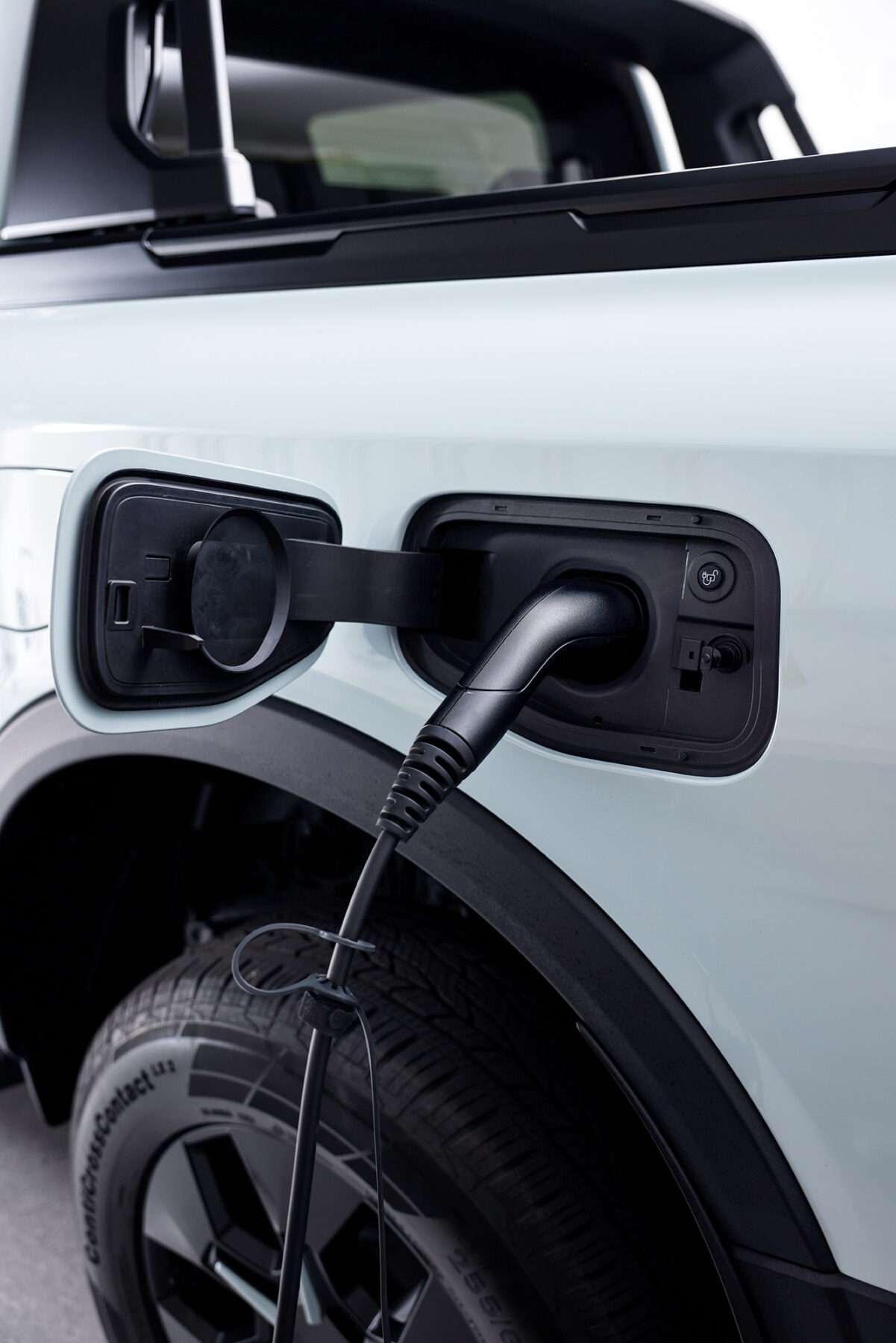
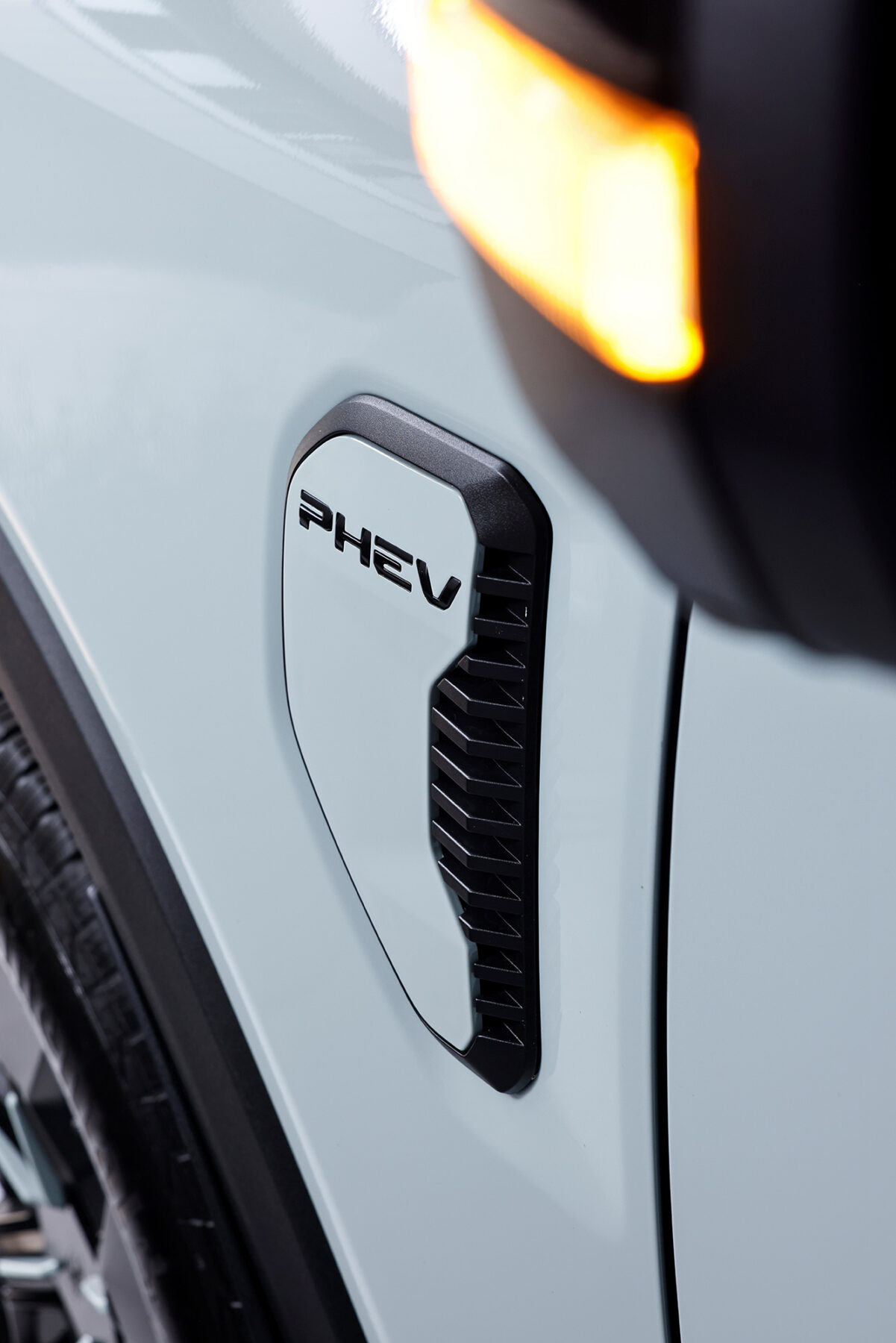
Unlike some hybrids that offer efficiency at the expense of capability, the Ranger PHEV retains the same mechanical low-range transfer case, full-time 4WD and locking rear differential found in the Ranger Raptor. It also claims an impressive 2.9L/100km in lab-tested combined fuel use, and while that’s difficult to achieve in real-world touring, we still returned an excellent 6.9L/100km on a 60km highway run using Auto EV mode. Fuel consumption would be lower again in stop-start driving due to the Ranger PHEV’s regenerative braking system.
Pro Power in the bush
One of the biggest drawcards for tourers and adventurers alike is the Pro Power Onboard system, standard across all Ranger PHEV grades. Drawing from the battery, the system delivers a maximum of 6.9kW across three AC power outlets – a single 10A (2.3kW) socket inside the cabin and two 15A (3.45kW) sockets in the tub.
What does that mean in the real world? It means you can run a 240V coffee machine, a fridge, lights, a camp oven, and still have capacity to charge e-MTB batteries, camera gear, satellite comms and even your laptop. The days of lugging a noisy generator or relying on a solar blanket to top up batteries are gone – with the Ranger PHEV, you have a portable, petrol-fed power station wherever you park.
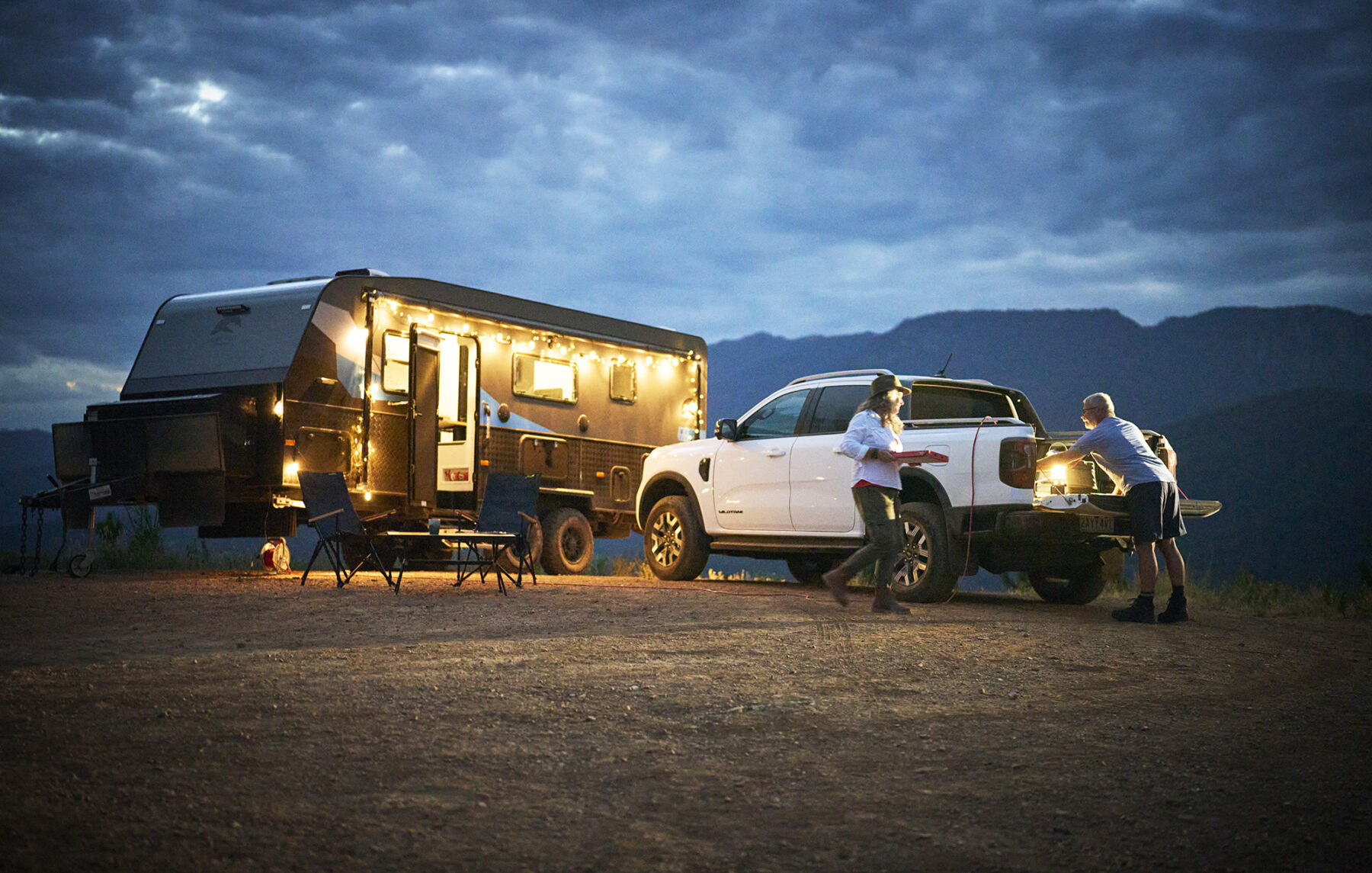

Need to ensure the battery is charged for your evening camp setup? Select EV Charge mode on the drive in – the petrol engine acts as a generator to top up the battery while you travel. We recorded 9.6L/100km on a highway leg in this mode, and it takes around two hours of driving to fully recharge the battery from empty. Prefer a silent arrival? Pre-charge the 11.8kWh battery at home or a powered site, switch to EV Now mode, and you can drive on electric power alone. While the Ranger PHEV doesn’t support DC fast charging, Ford claims a full recharge takes just under seven hours on a standard 10A outlet, or around four hours on a 15A socket.
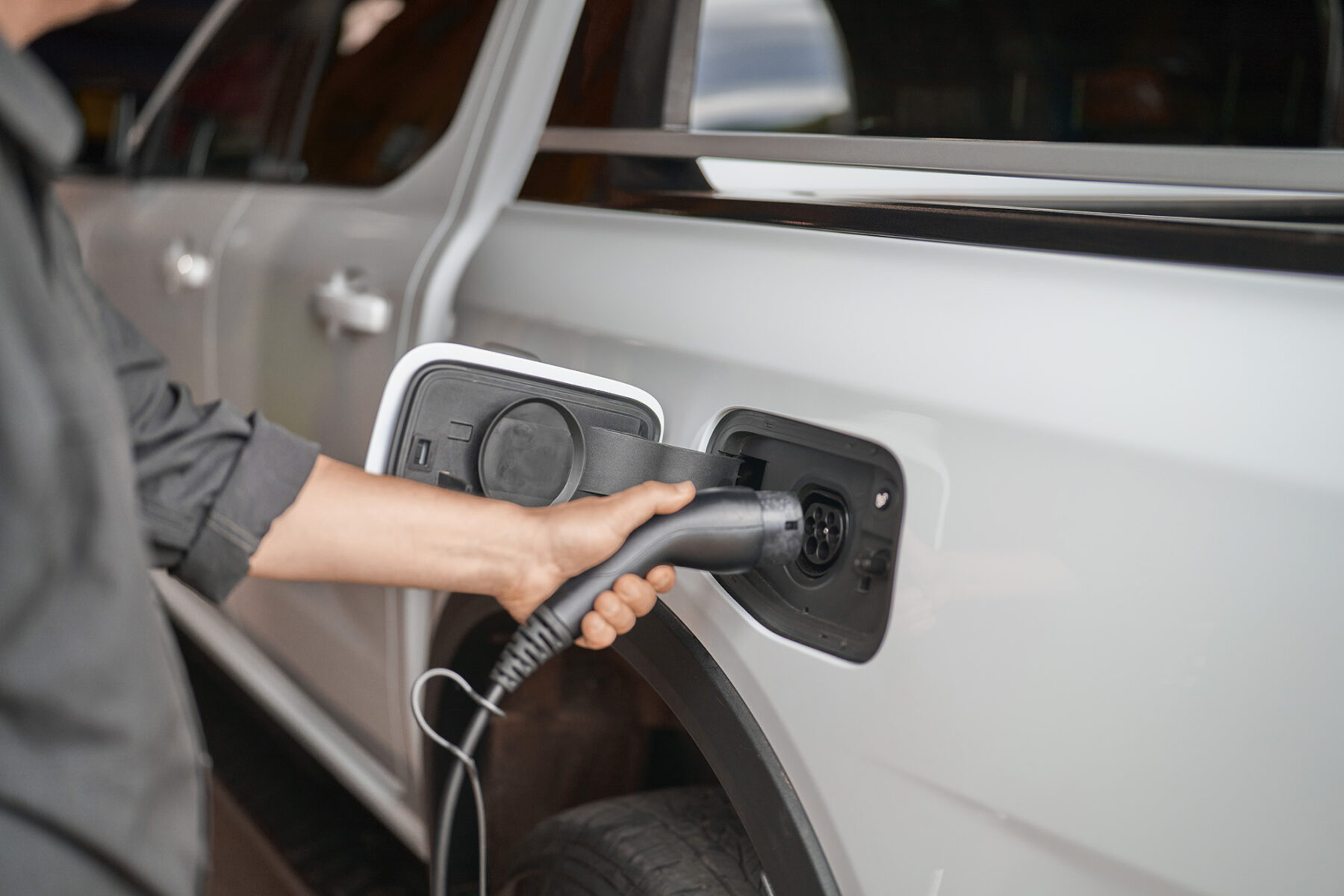
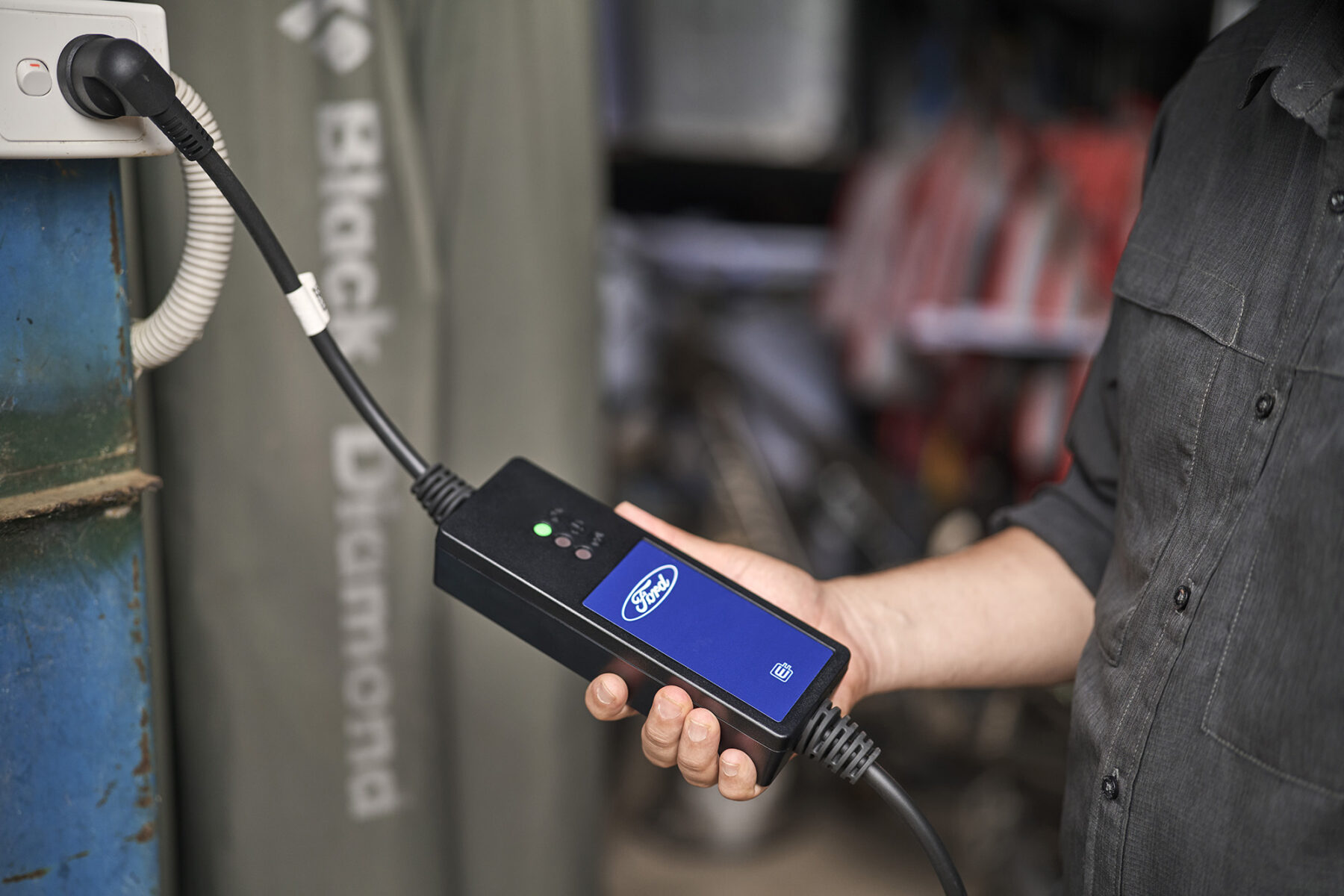
The 11.8kWh battery can also be recharged using a solar setup with an inverter. By connecting a solar panel to a suitable inverter and plugging the vehicle’s supplied Mode 2 AC charging cable into the inverter’s 240V output, you can top up the battery using renewable energy while stationary in remote areas.
On the road
Compared to its diesel counterparts, the Ranger PHEV feels more refined and responsive on bitumen. The petrol-electric drivetrain is smoother and quieter, with instant torque delivery that easily matches – and in many cases exceeds – the punch of the 3.0L V6 diesel.
Even towing a 2.8-tonne trailer and digger combo, the hybrid powertrain was unfazed, and the electric motor gave strong initial shove when pulling away on inclines. There’s a noticeable sense of calm in how the Ranger PHEV gets moving – no diesel clatter, no turbo lag, just torque.
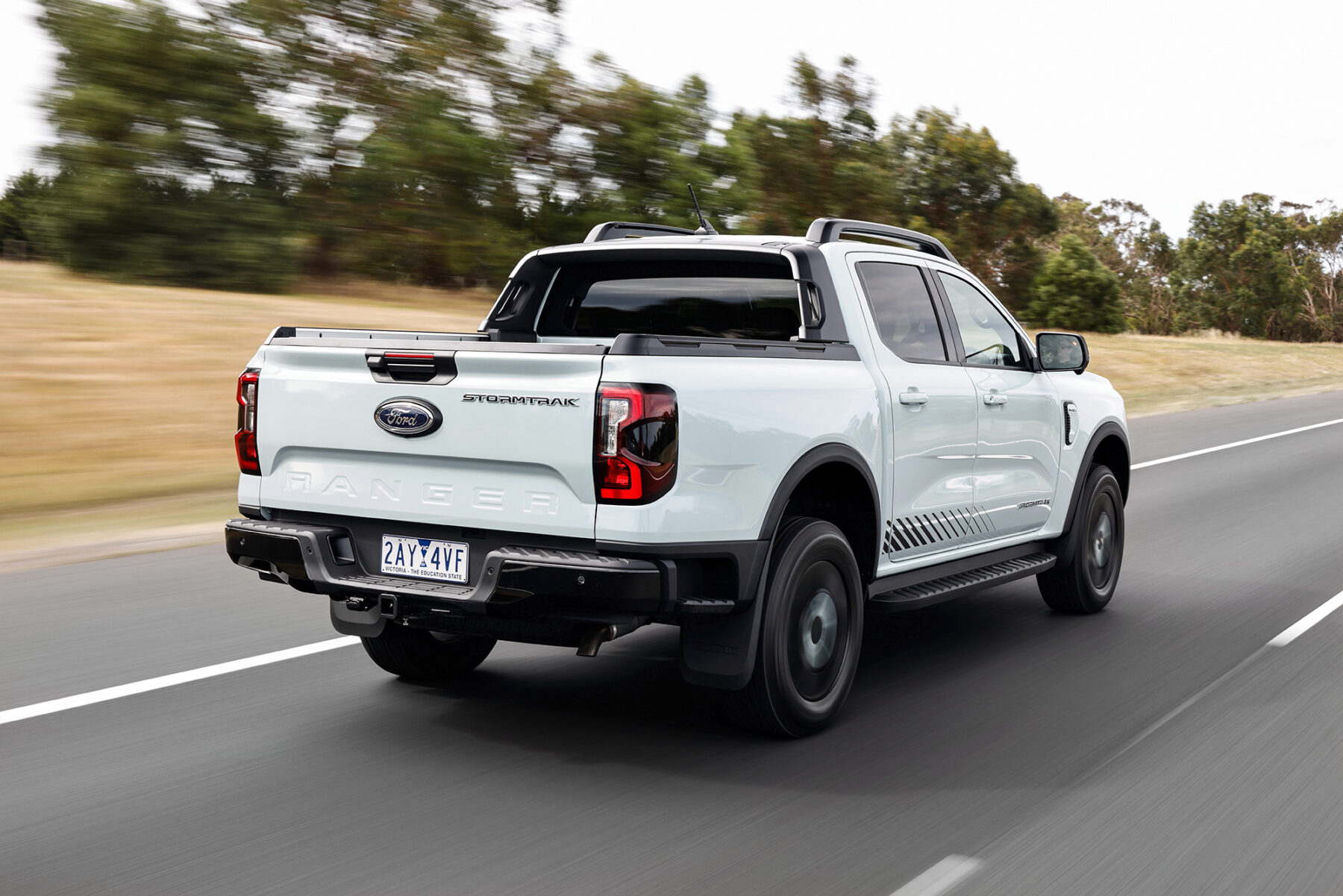
Handling is similarly composed. The extra rear-mounted battery weight helps settle the ride over corrugations and bumpy bitumen, and steering feel remains positive even when unladen. The claimed EV-only range is 45km, and we managed 27km on the highway before the petrol engine took over. You could expect slightly better real-world range when driving in stop-start conditions as the regenerative braking system would help to charge the battery.
Off the road
Ford’s commitment to 4WD credibility means the PHEV sacrifices nothing off-road. It gets the same drive-mode suite as other 4WD Rangers – Normal, Eco, Tow/Haul, Slippery, Mud/Ruts, Sand and Sport – as well as low-range gearing and a locking rear diff.
The Ranger PHEV launch drive incorporated a steep off-road section in Victoria’s Lerderderg State Park and several challenges at the Australian Automotive Research Centre (AARC), where we put the Ranger PHEV through climbs, descents and technical terrain. The Ranger PHEV crawled up steep 60 per cent inclines in EV-only 4 Auto mode before calling in the petrol engine as needed. The transition between power sources is seamless.
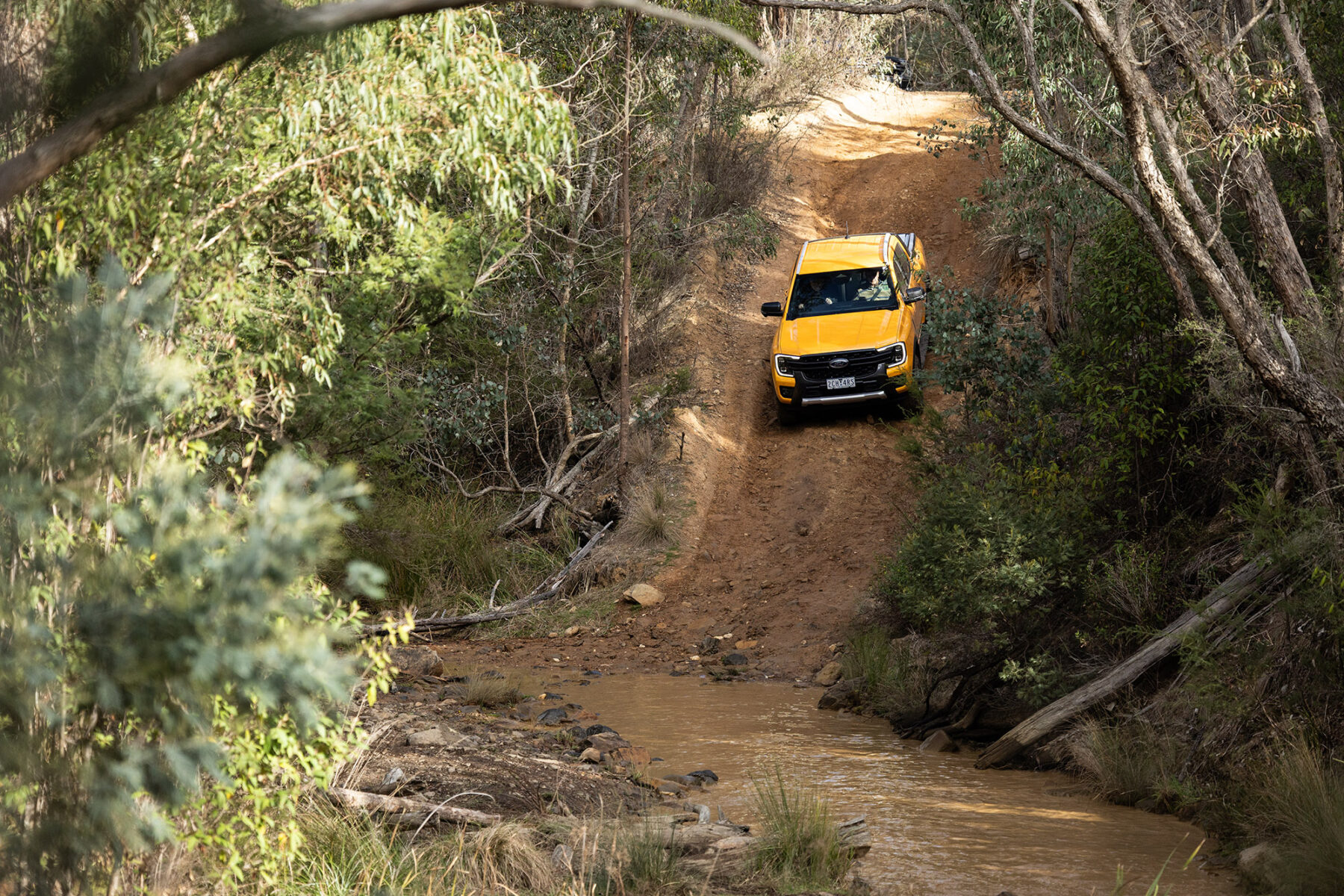
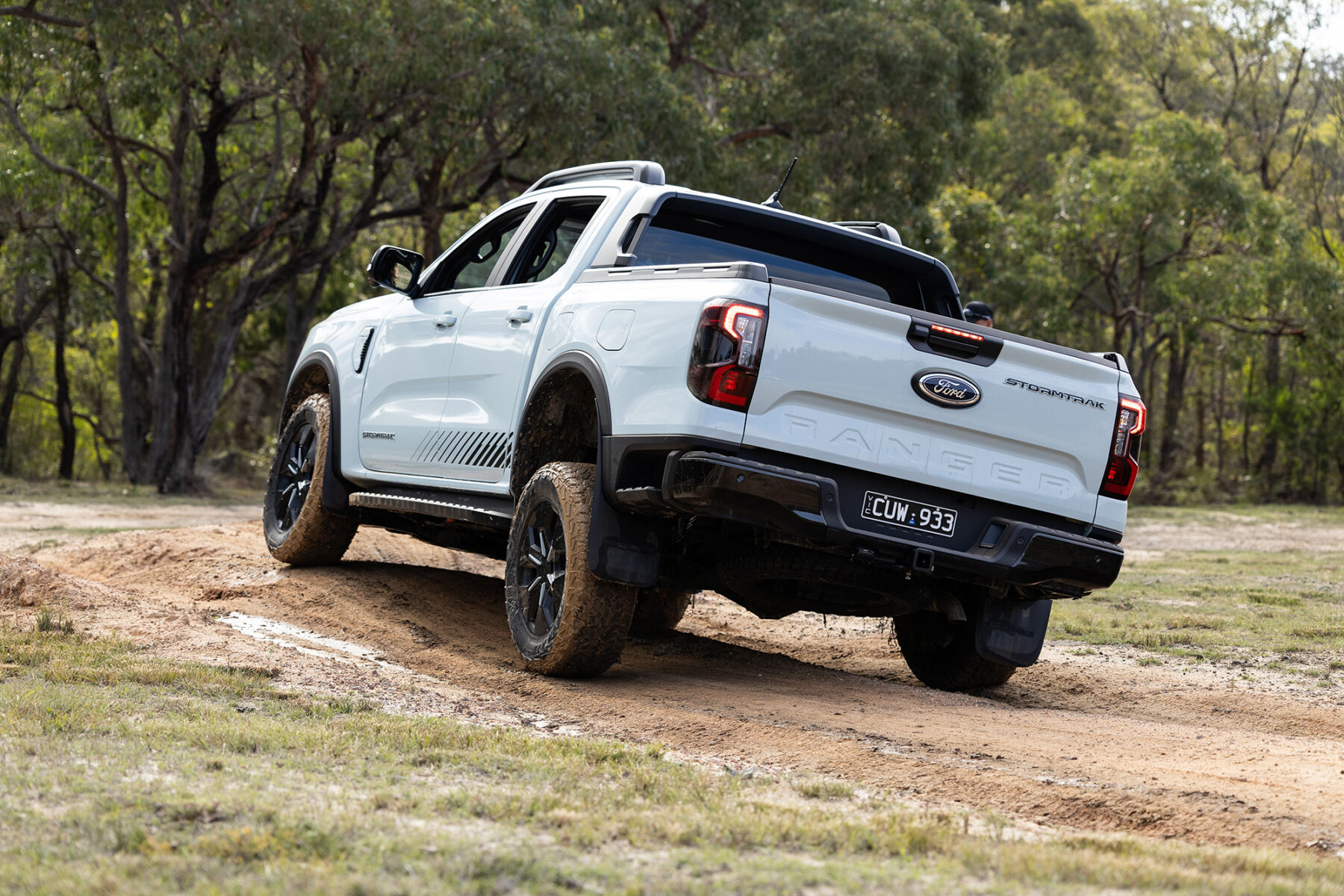
Hill Descent Control is well executed, letting you precisely set your speed in 1km/h increments using the cruise-control buttons. The front-facing camera includes a washer jet to clear the lens, and off-road angles remain competitive – up to 30.2° approach, 24.7° departure, 20.6° ramp-over and 800mm wading.
And then there’s the quiet. In EV Now mode, the Ranger PHEV glides through the bush with barely a whisper. You hear tyres on gravel, birdsong in the trees and – should you stop for a cuppa – the gentle hiss of the espresso machine running off onboard power.
Living with the Ranger PHEV
Inside, the Ranger PHEV is near-identical to its diesel siblings. The 12-inch portrait touchscreen retains physical buttons for volume and climate controls, and the cabin is modern, well laid out and comfortable.
There are a couple of PHEV-specific additions: a fuel flap release button on the dash (to safely depressurise the tank before opening) and an additional lockable flap for the charging port on the passenger side.
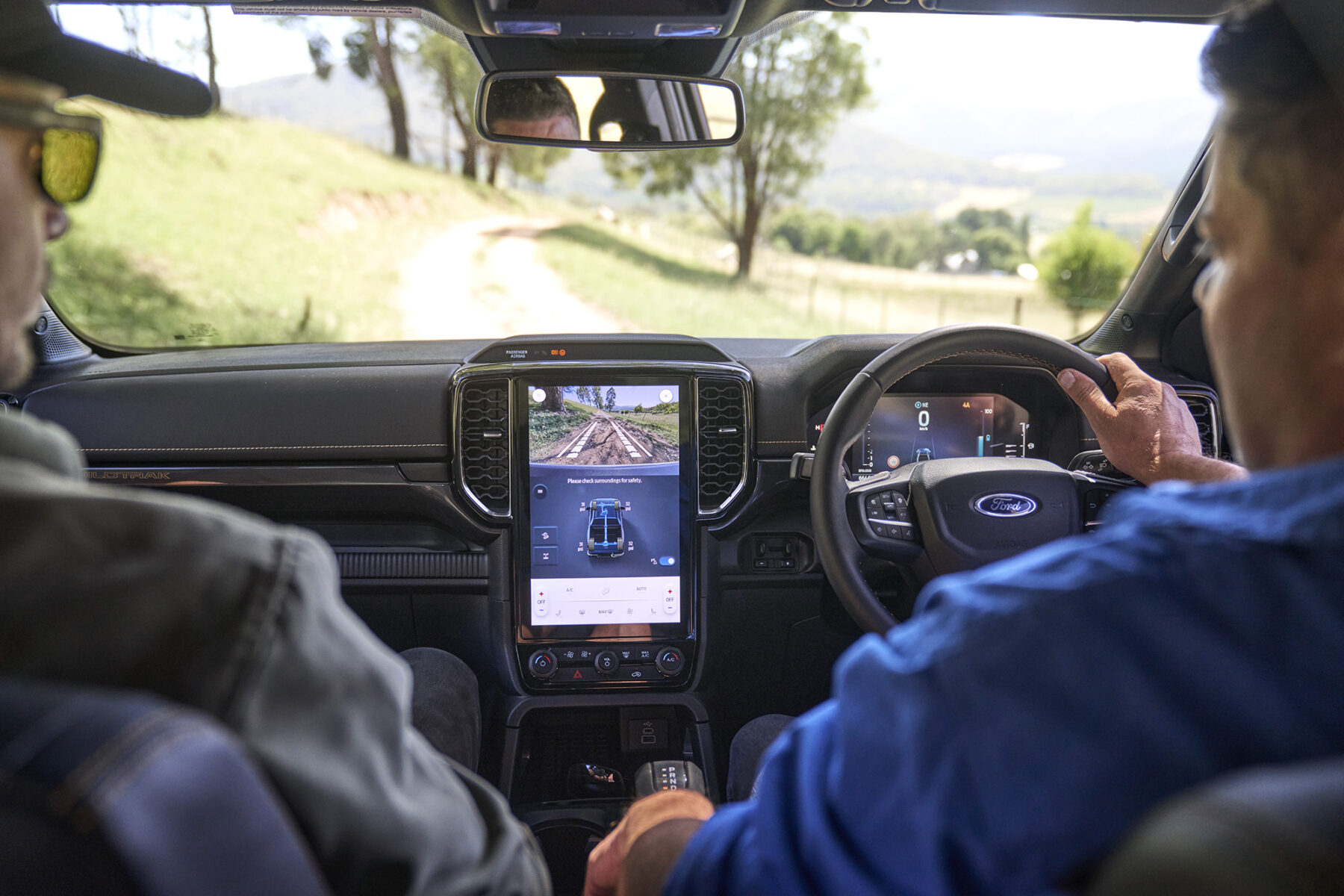
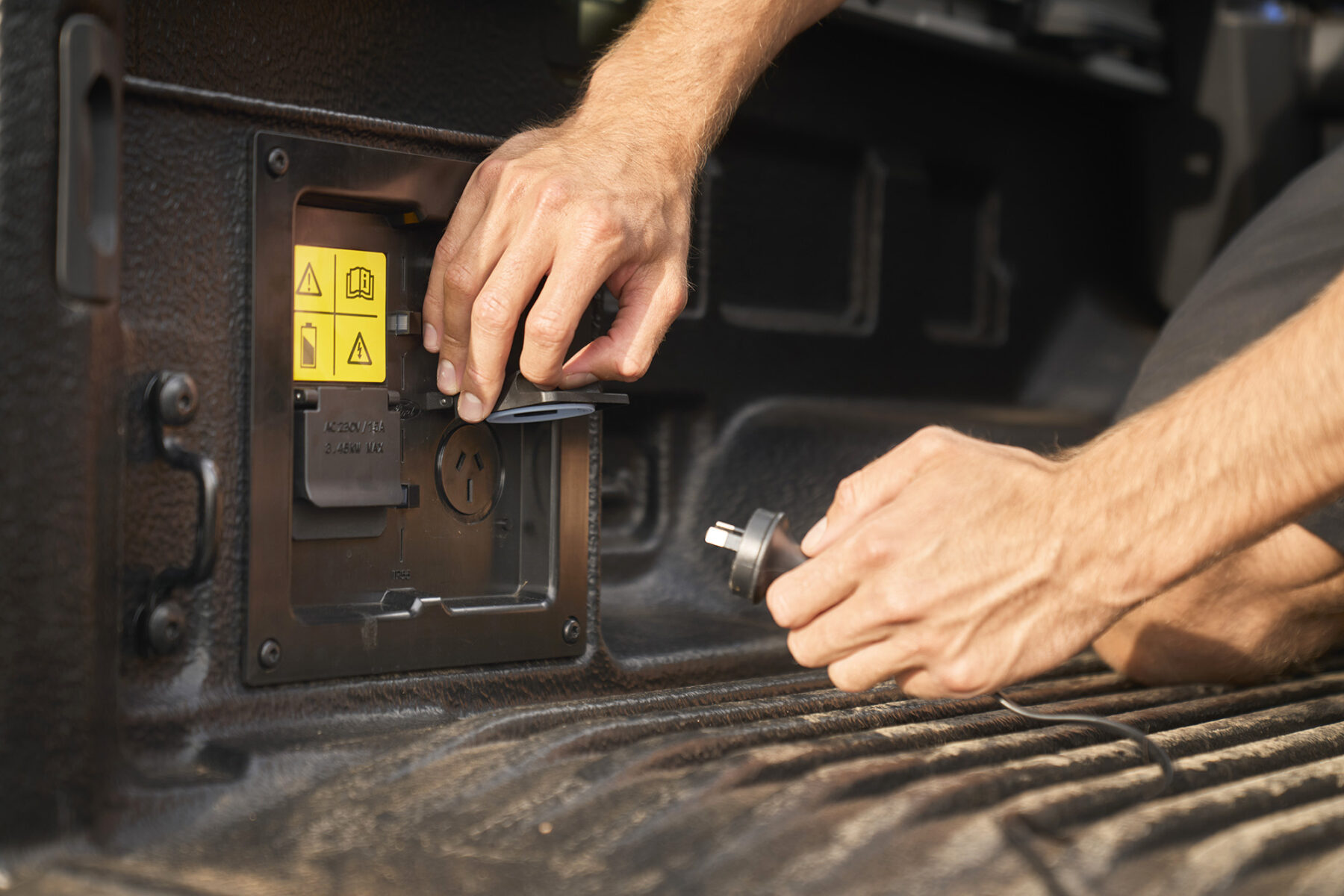
While the tub remains functional, the integrated electrics and raised bed floor mean you can’t fit an aftermarket tray or canopy. However, the two 15A sockets in the tub, top-rail tie-downs and clever cut-outs for long gear make it highly usable for camping setups, camera rigs and adventure gear.
Weight, payload and range
The trade-off for hybrid performance and onboard power is the additional weight of the battery under the tub. Kerb mass ranges from 2527kg (XLT) to 2692kg (Stormtrak), which is up to 400kg heavier than diesel equivalents. This affects payload – dropping to just 808kg in the top-spec Stormtrak variant. However, that is including the full-size spare wheel mounted under the tub, which is a no-cost option on the other variants. This means buyers will need to do careful GVM and towing calculations.

Braked towing capacity remains 3500kg across the range, and Ford has included integrated trailer braking, sway control and available Pro Trailer Back-Up Assist, which allows drivers to use a console mounted dial to steer where they want the trailer to go when reversing rather than the steering wheel. Fuel tank capacity is 70 litres, and even in EV Charge mode on the highway we returned 9.6L/100km – giving a comfortable touring range of over 700km.
The final word on the Ranger PHEV
The Ranger PHEV isn’t just a new engine option – it’s a rethinking of what a dual-cab 4WD ute can do for those seeking vehicle-based adventures. With the ability to quietly traverse the bush, power your gear at camp and still tow a boat or van without fuss, it’s a compelling proposition for those wanting a bridge between combustion engines and full EVs.
Yes, there are compromises – the payload hit, the lack of tray conversion and the modest EV-only range – but Ford has delivered a genuinely capable 4WD with meaningful advantages for adventurers, tradies and remote-area travellers alike.
And when you’re at camp and the espresso machine is bubbling beside the swag, your e-MTB is on charge and there’s no generator noise to spoil the moment… you’ll be glad you brought the hybrid.
The EV drive modes
The Ranger PHEV gives drivers control over how and when to use electric power via four selectable EV modes, accessed via the ‘EV’ button on the centre console. Whether you’re maximising efficiency on the highway or saving battery for use at camp, there’s a setting to suit.
Auto EV – Let the vehicle decide
Automatically switches between petrol and electric power for the best balance of performance and efficiency. Ideal for day-to-day driving or mixed terrain.
EV Now – Electric-only driving
Uses battery power alone unless the driver commands more torque. Perfect for silent running through national parks or early-morning departures from camp.
EV Later – Save battery for later use
Prioritises petrol power to preserve the current battery charge. Useful if you want full battery capacity when you arrive at your destination – for example, to run camp appliances via Pro Power Onboard.
EV Charge – Charge while you drive
Uses the petrol engine to replenish the battery on the go. Ideal when you’re away from charging infrastructure but want a full battery to power gear at your next stop.
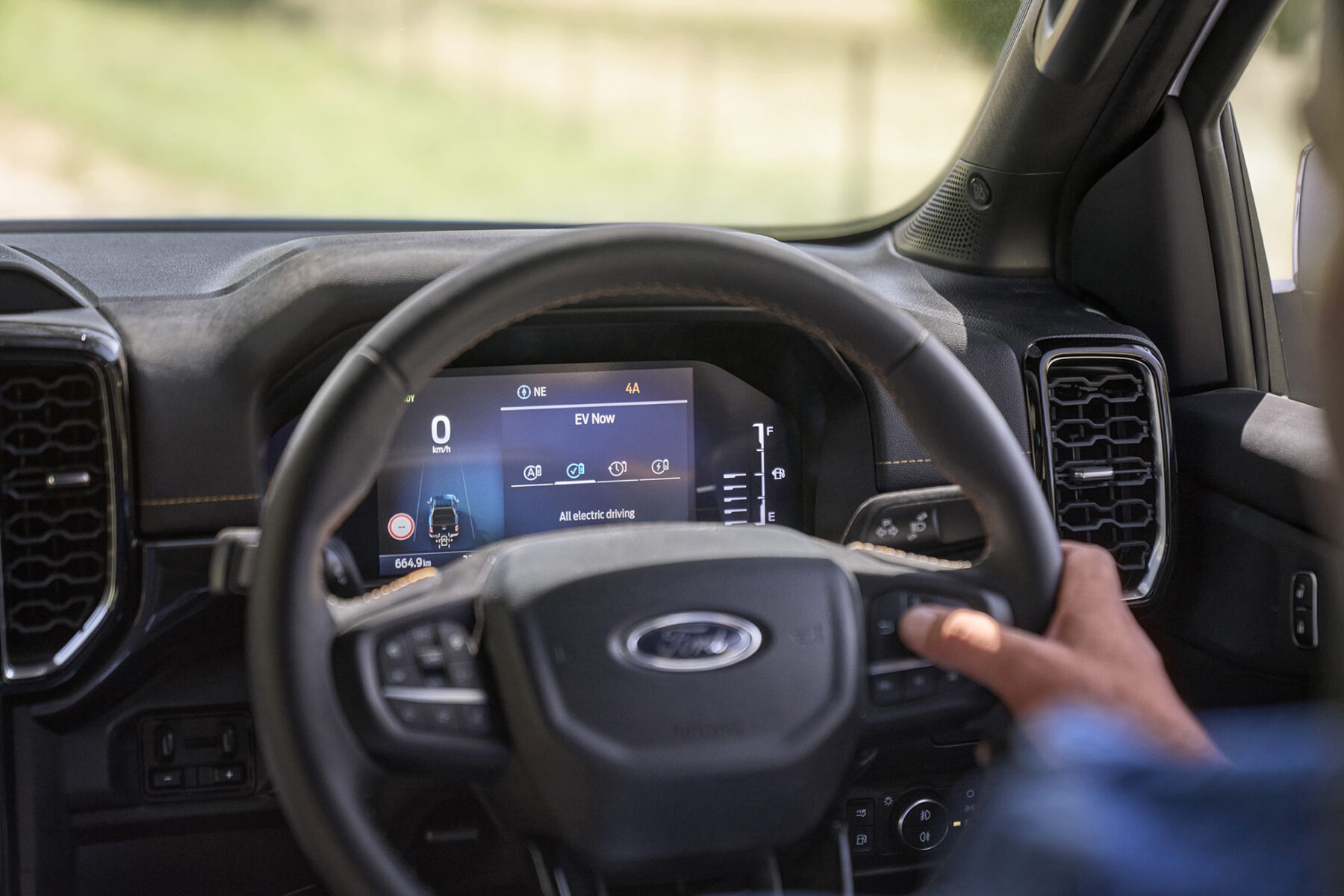
There is even an EV Coach integrated into the digital instrument cluster. This visual guide helps drivers understand how their driving style affects energy usage, showing when the vehicle is using electric power, regenerating energy through braking, or drawing on the petrol engine. It’s a handy tool for learning how to maximise battery efficiency, particularly in stop-start traffic or when trying to extend electric-only range on the trail.
The powered site
The Ford Ranger PHEV’s Pro Power Onboard is a game-changer. It’s a built-in 240V AC power system that turns the vehicle into a mobile generator capable of running essential appliances and charging critical gear in the bush.
• Cabin outlet: 1 x 10A (2.3kW @ 230V)
• Tray outlets: 2 x 15A (3.45kW @ 230V each)
Whether you’re setting up for an extended stay or simply want decent coffee at an overnight camp, this system has you covered. With the battery charged (or the petrol engine running in EV Charge mode), you can power or charge:
• A camp oven or 240V coffee machine
• A portable fridge/freezer
• Drone and camera batteries
• Electric mountain bike
• Satellite comms and laptops
• Lights equipment
• Power tools at the worksite
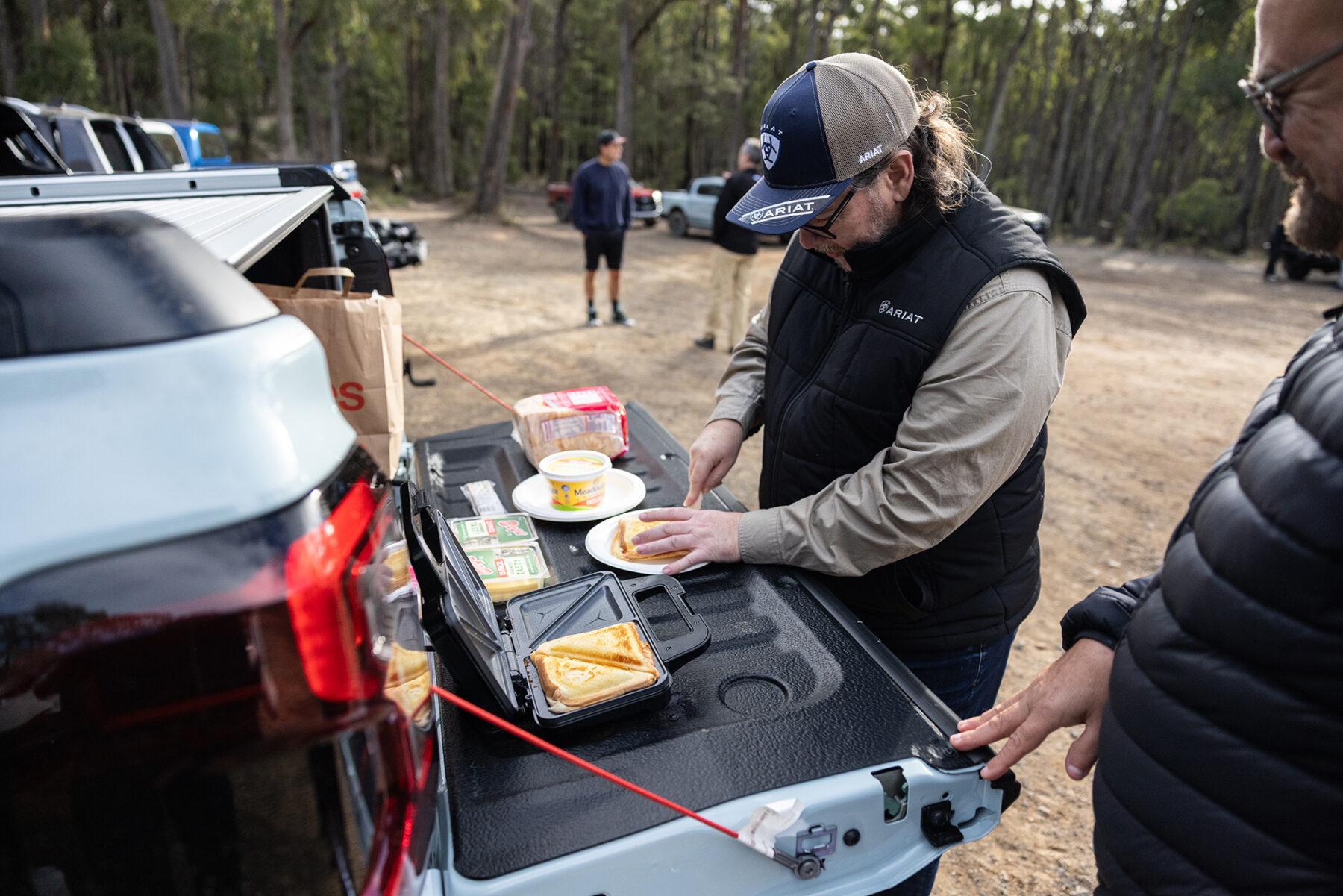
The system works even when the vehicle is locked or charging. And if the battery runs low, the petrol engine kicks in seamlessly to keep your gear running. Think of it as a caravan park power pole – except you can take it anywhere.
Tip: When driving to camp use EV Later mode to save battery power for when you’re parked, or EV Charge mode while driving to top up the battery before arriving at camp.
What’s it cost?
XLT – $71,990 (plus ORC)
Sport – $75,990 (plus ORC)
Wildtrak – $79,990 (plus ORC)
Stormtrak – $86,990 (plus ORC)
See Ford Australia for full specifications and more info of the Ford Ranger PHEV.




